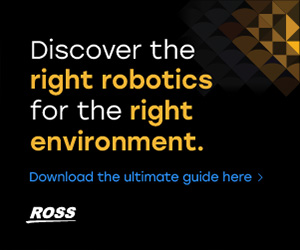Industry Insights: Engaging audiences through personalization and innovation

Subscribe to NCS for the latest news, project case studies and product announcements in broadcast technology, creative design and engineering delivered to your inbox.
The way audiences consume content is evolving, driven by technological advancements and changing viewer expectations.
In this second installment of the Industry Insights roundtable on Content Creation and Delivery, we explore the strategies behind effective content creation and delivery in today’s broadcast landscape
From leveraging advanced analytics to optimize content delivery to tailoring experiences for multiple platforms, this discussion offers a wealth of practical insights into the future of broadcast storytelling and audience engagement.
Key takeaways from this Industry Insights roundtable
- Personalization drives engagement: Tailored experiences powered by data analytics improve audience satisfaction and loyalty by aligning content with viewer preferences.
- Cross-platform optimization is essential: Adapting content to suit different devices and platforms ensures a seamless user experience, fostering wider reach and retention.
- Data informs decisions: Analytics provide actionable insights into viewer behavior, enabling targeted strategies that enhance content delivery and minimize churn risks.
- Experimentation fuels innovation: Iterative testing and adaptation of user experiences allow broadcasters to refine content and features to better meet audience demands.
- Repurposing content extends reach: Smart tools and workflows help broadcasters transform live and archived content into engaging assets optimized for various platforms.
What strategies have proven effective in engaging audiences across multiple platforms?
Martin Sebelius, CEO, Accedo Video Solutions: Video providers today know that to engage audiences across multiple platforms, they need to provide a high-quality and personalized user experience, optimized for each platform’s characteristics and capabilities. This means leveraging data to better understand what the audience wants, and tailoring content recommendations and the UX to meet their preferences. Regularly experimenting with UX iterations and measuring the impact of new features is an important part of identifying what resonates most with different audience segments.
Einat Kahana, VP, product solutions, Viaccess-Orca: Effective audience engagement strategies involve integrating content seamlessly across multiple platforms and second screen experiences. Maintaining a consistent or improved user experience, personalization branding, and incorporating interactive features and social media engagement can also have a positive impact. Additionally, utilizing multi-channel marketing ensures that audiences receive a unified and engaging experience, fostering brand loyalty, and expanding reach.
Paul Macklin, director of product management, Bitmovin: Quality of experience is hugely important, and being able to deliver a quality viewing experience consistently across every device is a key factor in engaging audiences across multiple platforms. But to optimize quality, you need to target devices with a given codec, and this is becoming increasingly challenging as software and hardware codec support gets more fragmented. This is why it pays to have a video player that has dedicated SDKs for each and every device — that way, you can guarantee your stream quality no matter what device the user is watching the content on.
Robin Kirchhoffer, CMO, Dalet: Engaging audiences across multiple platforms requires a multifaceted approach. One effective strategy is to repurpose content to fit different platforms, ensuring the message is tailored to each audience. Adopting a story-centric workflow allows broadcasters to centralize content, processes, and tools around the story, enabling the creation of (1) native content and (2) complementary content for various platforms. Utilizing data analytics helps understand audience preferences and behavior, giving the ability to tailor content accordingly.
Kate Dimbleby, CEO, Stornaway: For creators across advertising, social media, and brand engagement, one of the greatest challenges is not only attracting traffic from other platforms but also keeping your audience engaged and watching. Today, there are tools that will connect up content from other platforms: YouTube, TikTok, web, Instagram and create transformation viewer journeys streamed within a single window.
Andy Rayner, CTO, Appear: Tailored and personalized content delivery is key — leveraging Appear’s solutions, broadcasters can adapt streams and content to suit diverse platforms like mobile, OTT, and broadcast. From audience viewership metrics, data-driven insights help fine-tune messaging and maximise engagement.
Nav Khangura, VP, sales and business development, TMT Insights: There are numerous effective strategies in use today, but it all starts with knowing your audience and understanding their behaviors and preferences. Most successful strategies take this knowledge and apply consistent branding across tailored content for each end platform and use cross-promotion to drive potential audiences to the right place. The digital landscape today allows you to experiment at very low cost and engage with audiences in new ways such as interactive content and user-generated content.
Benjamin Shirley, product manager, broadcast, MainConcept: For sports broadcasters in particular, there’s a battle to win viewership across devices as discussed in IMG’s Digital Trends 2025 report. Increasingly audiences are becoming content creators participating in discussion feeds through apps or social media. Interactive content such as questions, challenges and votes seem to drive better engagement and are effective in engaging audiences across multiple platforms.
Chris Wilson, director of product marketing, MediaKind: Multiscreen engagement strategies — such as live content on the main screen paired with alternative or interactive content on secondary devices — have proven highly effective. Features like watch parties and “watch together” experiences enhance communal viewing and audience engagement. Interestingly, the rise of FAST channels has rekindled interest in linear programming, offering viewers an easy choice amidst content overloads.
How has data analytics influenced content delivery and audience targeting?
Martin Sebelius: Data analytics has revolutionized content delivery and audience targeting by enabling OTT services to provide highly personalized experiences. By analyzing user behavior and viewing habits, video services can tailor recommendations, improve content discovery, and optimize user experience. This targeted approach not only enhances viewer satisfaction but also helps retain subscribers by proactively addressing churn risks through predictive models.
Einat Kahana: Data analytics — viewer preferences and behaviors in particular — has revolutionized content delivery and audience targeting by enabling broadcasters to make more informed decisions on content creation and scheduling. Harnessing data helps improve the user experience by identifying and addressing pain points in the viewing journey. Likewise, it allows for precise performance measurement and optimization, ensuring that content resonates with specific audience segments, which can enhance overall engagement and retention.
Paul Macklin: Data analytics has improved significantly over the last few years, enabling streaming services to measure audience engagement and understand where the problems are. With the right actionable data, video services can track, monitor and fix playback issues before they impact users. This helps providers optimize the viewing experience, which in turn increases viewer engagement and retention. And now, we also have AI in the mix, which is supercharging data insights by processing and presenting video analytics in a more accessible way so users can troubleshoot streaming issues faster.
Kate Dimbleby: Data alone is meaningless without understanding what you’re tracking and why. While creators and clients increasingly demand data, we advocate for a holistic approach that prioritizes storytelling. Playtesting with an audience allows you to integrate meaningful engagement points into the experience, giving viewers greater agency while enabling creators to provide more comprehensive reports to stakeholders. This is why more creators are embracing interactive video—it reveals exactly which parts resonate most with audiences, making it a powerful tool for both storytelling and analytics.
Yoann Hinard, COO, Witbe: Data analytics have revealed distinct regional preferences in how audiences consume content, particularly regarding language and localization options. In Nordic countries, viewers strongly prefer original audio with local-language subtitles, requiring comprehensive subtitle options across multiple Nordic languages, while French audiences expect both dubbed versions and original audio tracks. These analytics also highlight the critical importance of proper content titling and metadata localization, from French-Canadian market requirements for translated titles to specific character set requirements in different regions, demonstrating how a granular understanding of regional preferences directly impacts audience engagement.
What are some effective ways to repurpose content for various platforms?
Andy Hooper, SVP Live Products, Ateliere Creative Technologies: Non-linear editing tools are increasingly adding features, including AI processing, to assist with the task of content repurposing. Additionally, the application of AI to live software and cloud production will bring repurposing capabilities to the real time production world. For live sourced content it will become increasingly possible to do part of the job real time, with only final amendments being made in post.
Bob Caniglia, director of North America sales operations, Blackmagic Design: With one of our tools, creators can capture high-quality moments from live broadcasts and transform them into dynamic assets suited for multiple channels. These types of tools allow for replays and key moments to be extracted with precision and repurposed into eye-catching clips that can be immediately uploaded to social media platforms for maximum engagement in real time. For instance, creators can take highlights from a live sports event and repurpose them into short, engaging videos for Instagram or TikTok, ensuring that each platform has content specifically optimized for its audience.
Jan Weigner, CTO, Cinegy: Automate the living heck out of it and templatize. Use AI to do different cuts and then fine tune.
Meghna Krishna, CRO, Magnifi: Consider how Michael Jordan’s iconic 1998 game-winning shot can be adapted for various platforms: a short, vertical video for Instagram or TikTok with captions like “Greatness is timeless” to engage younger audiences; a YouTube compilation of “Top 10 Clutch Plays” enhanced with overlays and commentary; or part of a streaming documentary on his evolution, enriched with interviews, stats, and highlights for a polished presentation. With scheduling and automation tools, you can tailor and release these variations on precise dates.
Benjamin Shirley: VOD and FAST have both slowed in engagement recently, and this is because households are churning their VOD subscriptions, choosing which service to have each month, leaving legacy platforms in the dark. A more effective approach would be a ‘Pay as you Watch’ app, where the underlying workflow allows users to download or stream content with ads for a small fee, or no ads for a slightly higher fee. This should be as cheap as possible while idle and cover its own cost per stream (if possible), bringing back choice for the viewer and means they do not need to subscribe to a low consumption platform.
Kathy Klingler, CMO, Brightcove: What many brands struggle with is once they have produced content and published it, how do they continue to maximize that content in different ways. We have seen the most impact when companies, creators and brands utilize video as a way to expand the reach of their content and engage new audiences and customers. Repackaging an existing video into a fresh new cut or taking a visual asset that was used already and repurposing it with video will allow brands to reinvigorate their existing cache of content.
Edouard Griveaud, senior product manager, Vizrt: In sports, some of the smartest ways to repurpose content are by creating highlight or analysis clips. Paired with a sophisticated analysis tool that offers dynamic graphics and different aspect ratios to suit various platforms, creators can make use of what they already captured in the live game. This is something UEFA does brilliantly, and they have increased engagement in their social media platforms as a result.
Stephane Cloirec, VP, video appliances and software, Harmonic: For centralized use cases, one obvious path to cost effectiveness is the ability to address different platform types — such as satellite, cable, terrestrial broadcast, and streaming — with a single product. This allows for a streamlined workflow process, simplified ingest, and a lower cost of operation. Also, distributed architectures offer a range of possibilities, from cloud-based content repurposing and distribution to localized customization at the edge, powered by advanced yet cost-efficient next-generation appliances.
How can broadcasters measure the effectiveness of content beyond viewership numbers?
James Gilbert, VP, sales and marketing, Pixel Power: I think the short answer here is that large, national-level broadcasts still do some things very well. News, current affairs, natural history, sports and scripted/drama content still have the ability to gather people around the TV to enjoy shared experiences. The trick for broadcasters is to refrain from trying to take the digital-only channels on at their own game; they arguably need to keep investing in their core, high-quality programming, and supplement it with additional online content that helps maintain audience loyalty and stickiness.
Paul Macklin: In the streaming space, broadcasters can access in-depth real-time insights into audience viewing metrics to understand how and where viewers are engaging with content. With the right tools, and by measuring data points such as the number of plays, concurrent and unique viewers, total page loads, plays per country and plays per device, broadcasters can build a much fuller picture of audience views. With this information, they know what is working well or not so changes can then be made where they are needed.
Yoann Hinard: Evaluating content effectiveness requires looking beyond traditional metrics like viewership and minutes watched to understand the complete viewer experience. Technical performance issues like slow loading times, repeated ads, or cross-device inconsistencies can significantly impact the audience’s perception, potentially undermining high-quality content. This was demonstrated recently during a high-profile streaming sports event where, despite record-breaking concurrent viewership, social media backlash over technical issues affected brand perception, highlighting how technical performance and social sentiment have become as crucial metrics of success as raw viewing numbers.
How can broadcasters stay relevant in an oversaturated digital market?
Andy Hooper: Two related approaches that will undoubtedly drive relevance are to re-orient the business around increasingly well defined market segments, and to become adept at increasing the amount of content that is produced and ‘tested’ on each of them. This can be considered analogous to the iterative and agile ‘fail fast’ approaches which have become widespread amongst the most successful software companies in the IT industry. This will require lowering the cost of production, both for live and scripted content — and adoption of more IT-centric technologies throughout the production chain is critical.
Martin Sebelius: Flexible subscription models, such as hybrid options that combine lower fees with advertising, can appeal to cost-conscious viewers while retaining those who prefer fewer or no ads. Equally important is providing value and standing out from the crowd. Exclusive content or niche programming tailored to dedicated fan bases can create a loyal audience, while innovative features like XR or social watching enhance the viewing experience. Retention hinges on understanding the audience at a granular level.
Einat Kahana: Broadcasters can stay relevant by embracing connected TV for seamless cross-platform experiences, leveraging AI for hyper-personalization and targeted advertising, and offering multi-tiered solutions like FAST Channels. Additionally, diversifying content through exclusive offerings — such as showcasing unique or local content — fostering interactive user engagement and forming strategic partnerships helps broadcasters differentiate themselves and maintain a competitive edge in a highly saturated market.
Meghna Krishna: Viewers demand real-time updates, and those who deliver first—with engaging, high-quality content—will stand out. Key moments, like a buzzer-beater or a game-winning goal, can be quickly turned into platform-specific formats such as Instagram stories or Youtube shorts, keeping content fresh and timely. Tailoring content to specific audience segments, such as adding localized commentary or subtitles, ensures broader appeal and deeper resonance.
Nav Khangura: To stay relevant in an oversaturated digital market, broadcasters must embrace a digital transformation of their entire organization and ensure their revenue streams are further diversified than they are today. By focusing on a digital-first approach, broadcasters have to utilize the strength of their brand and find innovative ways to connect with their audiences in a world where attention is scarce. This can be achieved by creating specialized digital content for their viewers, personalizing the viewing experience, and experimenting with sponsorships/partnerships and new immersive formats such as interactive and VR storytelling.
Edouard Griveaud: Broadcasters still have the huge advantage of having access to prime footage and premium technology: they are ideally placed to win in the digital space provided they adapt to the changing habits of audiences. Being creative and using the tools in the technology available broadcasters stand out and ultimately stay relevant in a populated digital market.
Yoann Hinard: In today’s crowded digital landscape, producing quality content is only half the battle: ensuring viewers can actually discover and access it across platforms is equally essential. Success requires optimizing content metadata and meeting indexing requirements for several different discovery engines, including Chromecast’s search, Apple TV’s interface, and Xumo’s program guide. This “content SEO” approach ensures that when viewers search for relevant topics across any platform or device, your content will appear as a compelling option in their preferred discovery environment.
What role do personalization and customization play in content delivery?
Martin Sebelius: For ad-supported platforms, personalization extends to the ads themselves. By delivering targeted ads that feel more relevant and less intrusive to viewers, viewing experience is improved and ad revenue increases. Achieving a high level of personalization, however, relies on the effective collection, analysis, and application of viewer data.
Einat Kahana: Personalization and customization are crucial in content delivery as they enhance the user experience by tailoring content to individual preferences. In addition to increased viewer satisfaction and loyalty, this tailored approach enables more effective targeted advertising, thereby driving higher engagement and retention rates. Customized experiences create a sense of value, encouraging users to spend more time on the platform.
Kate Dimbleby: People expect to be engaged now. But they will also know if you are using bots to speak to them. Finding a balance of personalization without losing human connection is the trick.
Benjamin Shirley: This will become even more important as the newer generations grow into the next line of “bill payers.” The next-generation viewer is used to well curated content they can engage with on the channels they are watching. This can involve a currency style exchange to influence or game within that channel.
Chris Wilson: Personalization is crucial in today’s content delivery, as it is now a standard that viewers expect. If providers can offer customized content delivery in line with the preferences of different audience segments, this can drive increased viewing time and deeper audience engagement, which translates to higher advertising revenue. AI plays a significant role by sifting through data to provide better predictions and targeted recommendations and aligning content with individual viewer preferences.
Kathy Klingler: Personalization and customization have always been crucial for driving engagement and increasing revenue because audiences want to feel like the message and content are being developed for them. As video content scales and AI is able to identify individual audience preferences, automation becomes essential for managing and delivering this personalized content efficiently. The ability to create, catalog, distribute, and analyze video content in a customized way is key to maximizing engagement and revenue.
Edouard Griveaud: It’s an important way to make content interactive, and in sports, this can take form in alternative feeds – including multilanguage feeds, social media, different aspect ratios, and more. By investing in expanding the content delivery to different outputs in different formats, broadcasters reach the audience where they are.
Stephane Cloirec: The demand for content personalization continues to grow to improve audience engagement and drive better monetization of content. Delivering solutions that enable customization at any level — be it country, region, city, or even individual users — is crucial for broadcasters striving to remain relevant and generate new revenue streams.
How do you personalize content to better connect with specific audience segments?
Meghna Krishna: With advanced AI and targeted tools, broadcasters can ensure content reaches the right audience at the right time. Through features like geogating, localization with dubs, subtitles, and cultural adaptations, we ensure authenticity and resonance for diverse regions. From social media clips to full match broadcasts, content is tailored to meet local preferences seamlessly.
Subscribe to NCS for the latest news, project case studies and product announcements in broadcast technology, creative design and engineering delivered to your inbox.







tags
Accedo, Andy Hooper, Andy Rayner, Appear, Ateliere, Ateliere Creative Technologies, Benjamin Shirley, Bitmovin, Blackmagic Design, Bob Caniglia, Brightcove, Chris Wilson, Cinegy, Dalet, data analytics, Edouard Griveaud, Einat Kahana, Harmonic, James Gilbert, Jan Weigner, Kate Dimbleby, Kathy Klingler, Magnifi, Magnifi AI, MainConcept, Martin Sebelius, MediaKind, Meghna Krishna, Nav Khangura, Paul Macklin, Personalization, Pixel Power, repurp, Robin Kirchhoffer, Stephane Cloirec, Stornaway, TMT Insights, Viaccess-Orca, Vizrt, Witbe, Yoann Hinard
categories
Content, Content Delivery and Storage, Heroes, Industry Insights, Voices